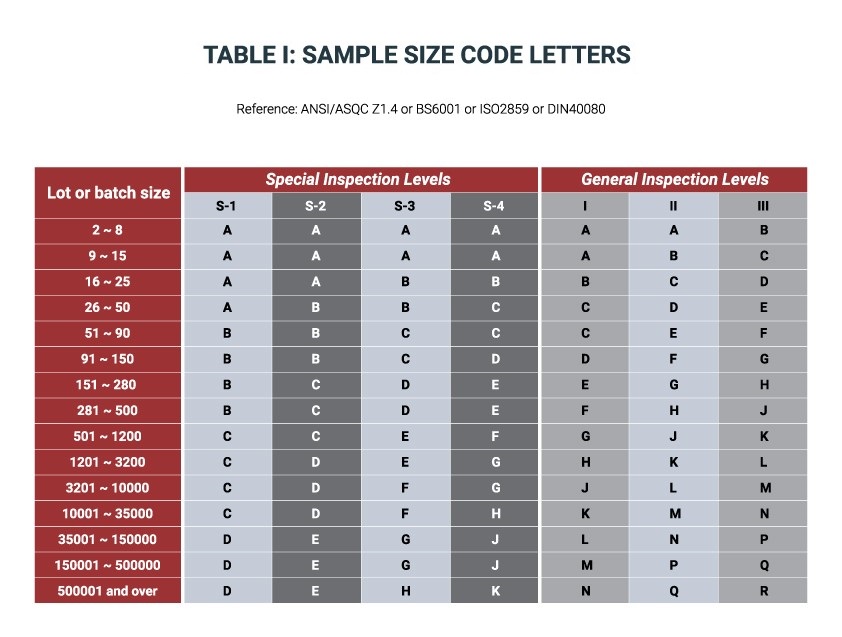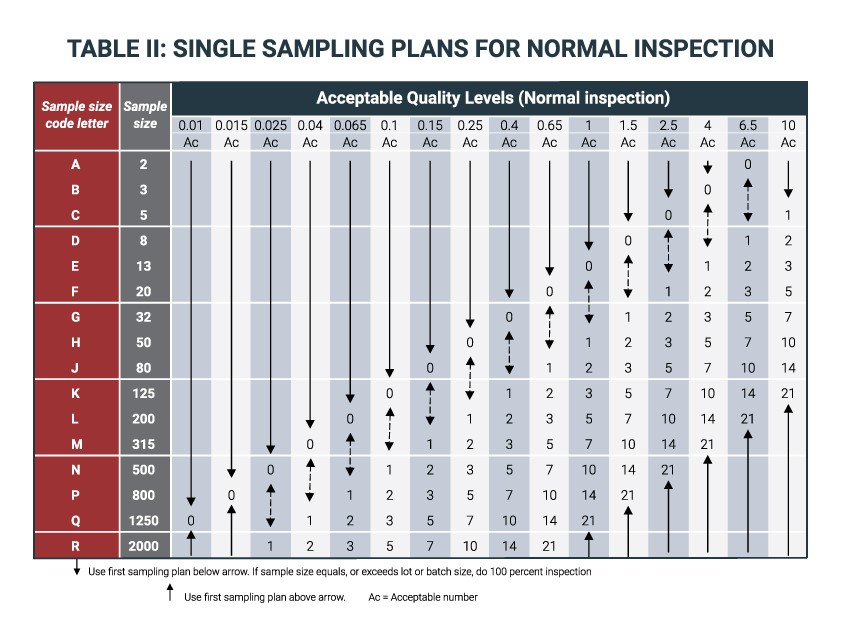This is a plan for setting up the acceptable sampling technique that includes criteria setting sample size, and for accepting and rejecting a component, product, or service based on samples meeting prescribed quality criteria. Plans may involve single, double, sequential, chain, multiple, or skip-lot sampling techniques. With variable samples, management may deploy single, double, and sequential sampling techniques.
Order Quantity: 3500 pcs
There are two tables that are used to determine the AQL of products. They are both used to determine the sample size for inspection and the acceptable defective units. The AQL Sampling Chart offers more options including inspection levels and standards for unique cases.
Table 1: Sample Size Code Letters
The most common standard is AQL Table 1 (below) which is used as a fundamental tool when carrying out quality control inspections. The AQL Table makes it easy for the buyer and manufacturer and quality control provider to come together in agreement on quality inspection standards. Table 1 also helps to provide the sample size code letters.
Table 2: Single Sampling Plans for Normal Inspections
Table 2 includes single sampling plans for normal inspections and the check marks on the table show how many products have passed whereas, the cross shows how many have failed. The up arrows show that you should use the sampling size above the arrow and if you see an arrow that equals or exceeds the batch size, you should go ahead and complete a 100% inspection or a piece-by-piece inspection. Looking at the down arrows, you should use the first sampling plan below the first down arrow.
AQL is a fundamental measure of standards used to complete product inspections. In line with ISO 2859-1, it refers to the lower limits of acceptable standards for consumer products over the course of a number of inspections. AQLs should be used to determine whether or not a product has met a client’s specifications.
AQLs can be set for a percentage or number of critical, major and minor defects. Critical defects – 0% are not acceptable as a user could be harmed, the product is not compliant with regulations, or the defect results in product failure. Major defects – 2.5% represents defects that result in the product being considered unacceptable by the end user and minor defects – 4%, are a failure to meet specifications in ways that most buyers would still accept.
AQL could be a preferable method to testing every single product in a batch. If you are only purchasing products in small volumes, you probably have the resources to test everything but as quantities rise, rigorous testing becomes harder to manage in terms of time and cost.
AQL is a robust statistical model that has been used very successfully over many years. However, an AQL inspection will not guarantee a defect-free experience as some defects will go undetected. AQL will simply allow you to select the percentage of defects that you are willing to accept and can be a sensible option when it comes to gaining valuable in-sights about your products in your supply chain.

